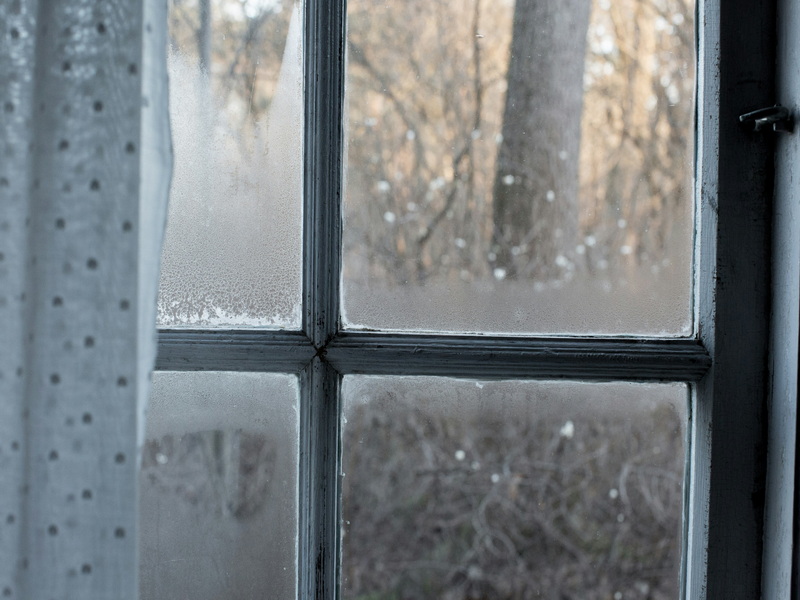English 




Views: 222 Author: Astin Publish Time: 2025-02-14 Origin: Site



Content Menu
● Understanding the Importance of Rubber Seals
>> Tools
>> Materials
>> Step 1: Remove the Old Rubber Seal
>> Step 3: Measure for Replacement Seal
>> Step 4: Cut New Seal to Size
>> Step 5: Install the New Seal
>> Step 6: Apply Silicone Sealant (Optional)
>> Step 7: Test for Proper Sealing
>> Choosing Quality Rubber Seals
>> Seasonal Maintenance Checks
● Benefits of Regular Maintenance
● FAQ
>> 1. How often should I replace rubber seals on my aluminum windows?
>> 2. Can I use any type of rubber seal for my aluminum windows?
>> 3. What should I do if I can't find an exact match for my window's rubber seal?
>> 4. Is it necessary to apply silicone sealant when replacing rubber seals?
>> 5. What are some signs that my window seals need replacing?
Aluminum windows are a popular choice for many homeowners due to their durability and low maintenance requirements. However, over time, the rubber seals that help insulate and protect these windows can deteriorate, leading to drafts, water leaks, and decreased energy efficiency. Replacing the rubber seal on aluminum windows is a manageable DIY task that can restore the window's functionality and improve your home's comfort. This guide will provide a comprehensive overview of how to replace rubber seals on aluminum windows, including the tools and materials needed, step-by-step instructions, and maintenance tips.

Rubber seals play a crucial role in maintaining the integrity of aluminum windows. They serve several key functions:
Rubber seals help prevent water and air from entering your home, protecting against moisture damage and drafts. This is especially important in regions with extreme weather conditions.
Properly sealed windows contribute to better insulation, helping to maintain indoor temperatures and reduce energy costs. A well-sealed window can significantly lower heating and cooling expenses.
Seals also help minimize outside noise, creating a quieter indoor environment. This is particularly beneficial for homes located near busy streets or construction sites.
When these seals wear out or become damaged, it is essential to replace them promptly to maintain your windows' performance. Ignoring this issue can lead to more significant problems down the line, such as mold growth from moisture intrusion or increased energy bills due to inefficient heating and cooling.
Before starting the replacement process, gather the following tools and materials:
- Utility knife or razor blade
- Flathead screwdriver
- Pliers
- Measuring tape
- Caulking gun (if using silicone sealant)
- Safety goggles
- Work gloves
- Replacement rubber seal (ensure it matches the profile of your existing seal)
- Silicone sealant (optional for added waterproofing)
- Cleaning solution (mild soap or glass cleaner)
- Cloth or sponge for cleaning
Having these tools and materials ready will streamline the process and ensure you have everything you need at hand. Additionally, wearing safety goggles and gloves will protect you during the installation.

Begin by carefully removing the old rubber seal from the window frame. Use a utility knife or razor blade to cut away any adhesive that may be holding it in place. Be cautious not to damage the aluminum frame during this process. If the seal is particularly stubborn, you may need to use pliers to pull it away gently. Take your time with this step; rushing may lead to scratches or dents in your window frame.
Once the old seal is removed, clean the area thoroughly. Use a cleaning solution to remove any dirt, debris, or old adhesive residue from the frame. This step is crucial for ensuring that the new seal adheres properly. A clean surface allows for better adhesion of both the rubber seal and any additional sealant you may choose to apply later.
Measure the length of each section where the rubber seal will be installed. It is essential to get accurate measurements to ensure a proper fit. If your window has multiple sections, measure each one individually. When measuring, it's helpful to write down your measurements or take a photo for reference.
Using your measurements, cut the new rubber seal to size. Make sure to make clean cuts at a 45-degree angle if you are joining two pieces at a corner. This will help create a tight fit and prevent leaks. If you're using a pre-cut seal that comes in standard lengths, ensure that it fits snugly into place without any gaps.
Begin installing the new rubber seal by pressing it into place along one edge of the window frame. Ensure that it fits snugly into any grooves or channels designed for it. Work your way around the window frame until all sections are installed. It's important not to stretch or pull too hard on the rubber as this can lead to misalignment once installed.
For added protection against water infiltration, consider applying a bead of silicone sealant along the edges of the new rubber seal. This step is optional but can enhance waterproofing and durability. If you choose this option, make sure that you apply an even bead without gaps or bubbles.
After installation, close the window and check for any gaps or areas where air or water may still penetrate. If necessary, adjust or add additional sealant to ensure a tight fit. Testing can also be done by running your hand along edges while feeling for drafts; if you feel air movement, further adjustments may be needed.
When selecting replacement rubber seals, consider investing in high-quality materials that are designed specifically for aluminum windows. Cheaper options may wear out faster or fail to provide adequate insulation. Look for seals made from durable materials such as EPDM (ethylene propylene diene monomer) rubber which offers excellent weather resistance and longevity.
In addition to replacing worn seals as needed, performing seasonal maintenance checks can help prolong their life span. Inspect seals before winter sets in; cold weather can exacerbate existing issues with seals that might not be noticeable during warmer months.
While replacing rubber seals on aluminum windows can be a straightforward DIY project, some homeowners may prefer hiring professionals for peace of mind or if they encounter complications during installation. If you feel uncertain about any part of the process or if your windows have unique features that complicate replacement, consulting with a professional could save time and potential errors.
Regular maintenance of your aluminum windows—including replacing worn rubber seals—offers numerous benefits:
Well-maintained windows last longer than neglected ones; regular checks prevent small issues from escalating into major repairs.
Investing in home maintenance enhances property value; prospective buyers appreciate energy-efficient features such as well-sealed windows.
Properly sealed windows create a more comfortable living environment by regulating indoor temperatures effectively.
Replacing rubber seals on aluminum windows is an essential maintenance task that can enhance energy efficiency, improve comfort, and prevent water damage in your home. By following this guide's steps carefully, you can successfully replace worn seals with minimal effort. Regular maintenance will ensure that your windows continue to perform at their best for years to come.
Taking proactive steps towards maintaining your aluminum windows not only saves you money in potential repairs but also contributes positively towards environmental sustainability through reduced energy consumption.

It is advisable to inspect rubber seals annually and replace them if you notice signs of wear or damage.
No, it's crucial to use a replacement seal that matches the profile of your existing seal for proper fit and function.
Consider consulting with a professional glazier who can help you find a suitable replacement or recommend alternatives.
While not always necessary, applying silicone sealant can provide additional waterproofing and extend the life of the new seals.
Common signs include drafts, water leakage during rainstorms, visible cracks in the rubber, or increased energy bills due to poor insulation.
Top Aluminum Furnitures Manufacturers and Suppliers in Czech Republic
Top Aluminum Furnitures Manufacturers and Suppliers in Poland
Top Aluminum Furnitures Manufacturers and Suppliers in Belgium
Top Aluminum Furnitures Manufacturers and Suppliers in Finland
Top Aluminum Furnitures Manufacturers and Suppliers in Denmark
Top Aluminum Furnitures Manufacturers and Suppliers in Greece
Top Aluminum Furnitures Manufacturers and Suppliers in Portugal
Top Aluminum Furnitures Manufacturers and Suppliers in Austria
Top Aluminum Furnitures Manufacturers and Suppliers in Norway
Top Aluminum Furnitures Manufacturers and Suppliers in Sweden
